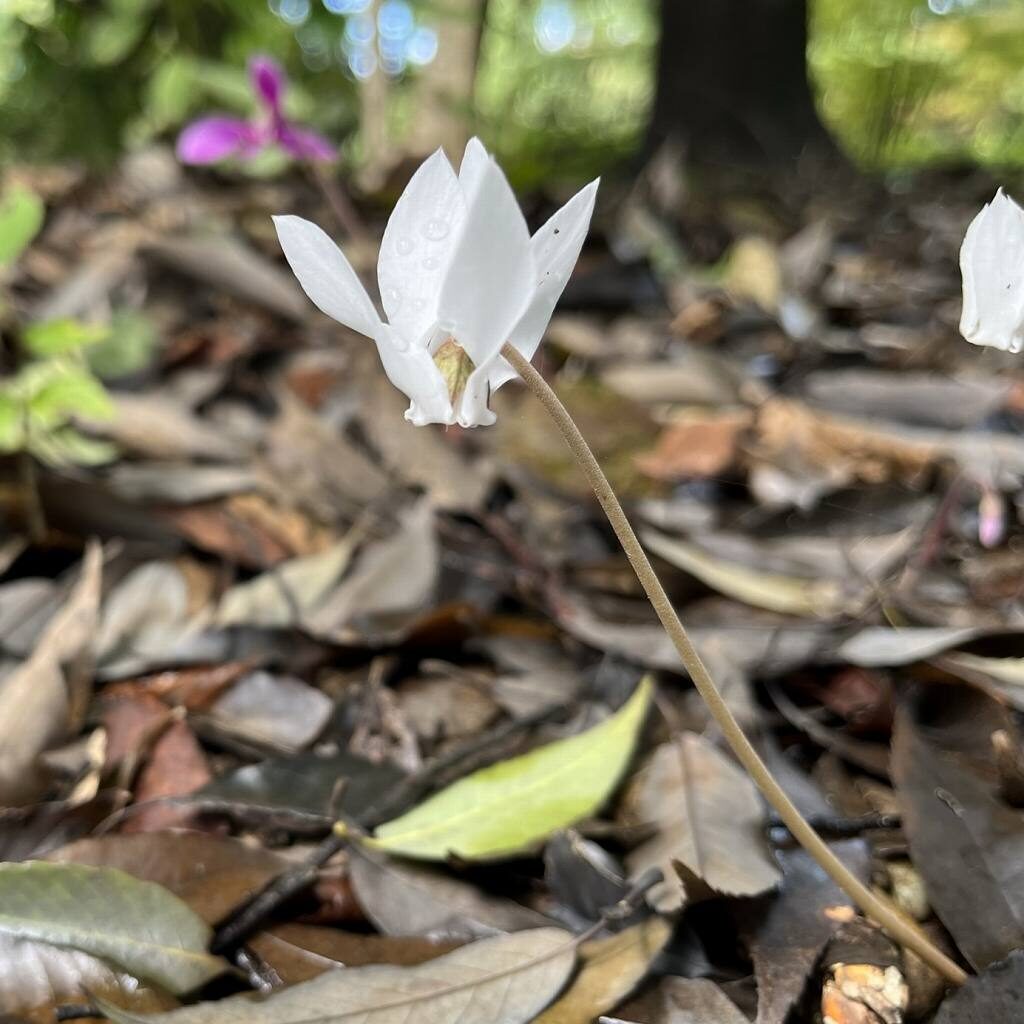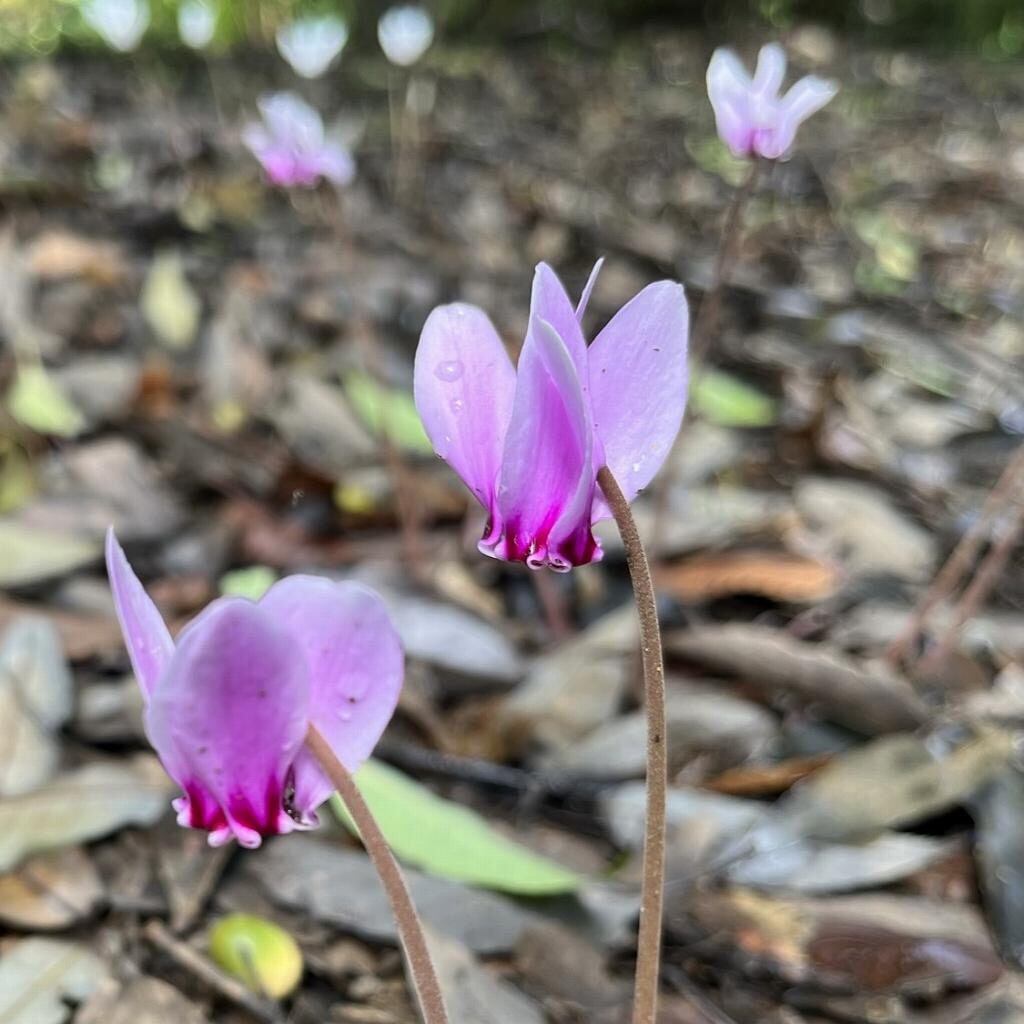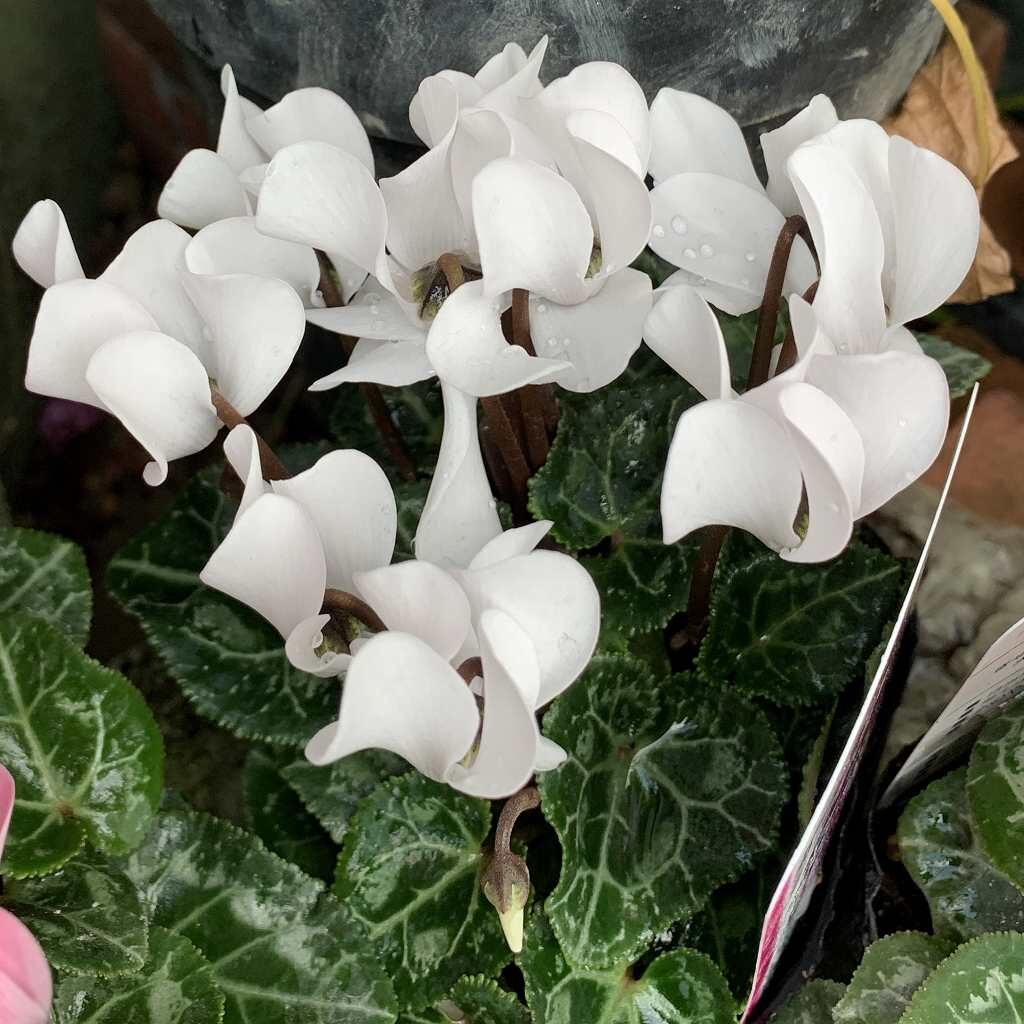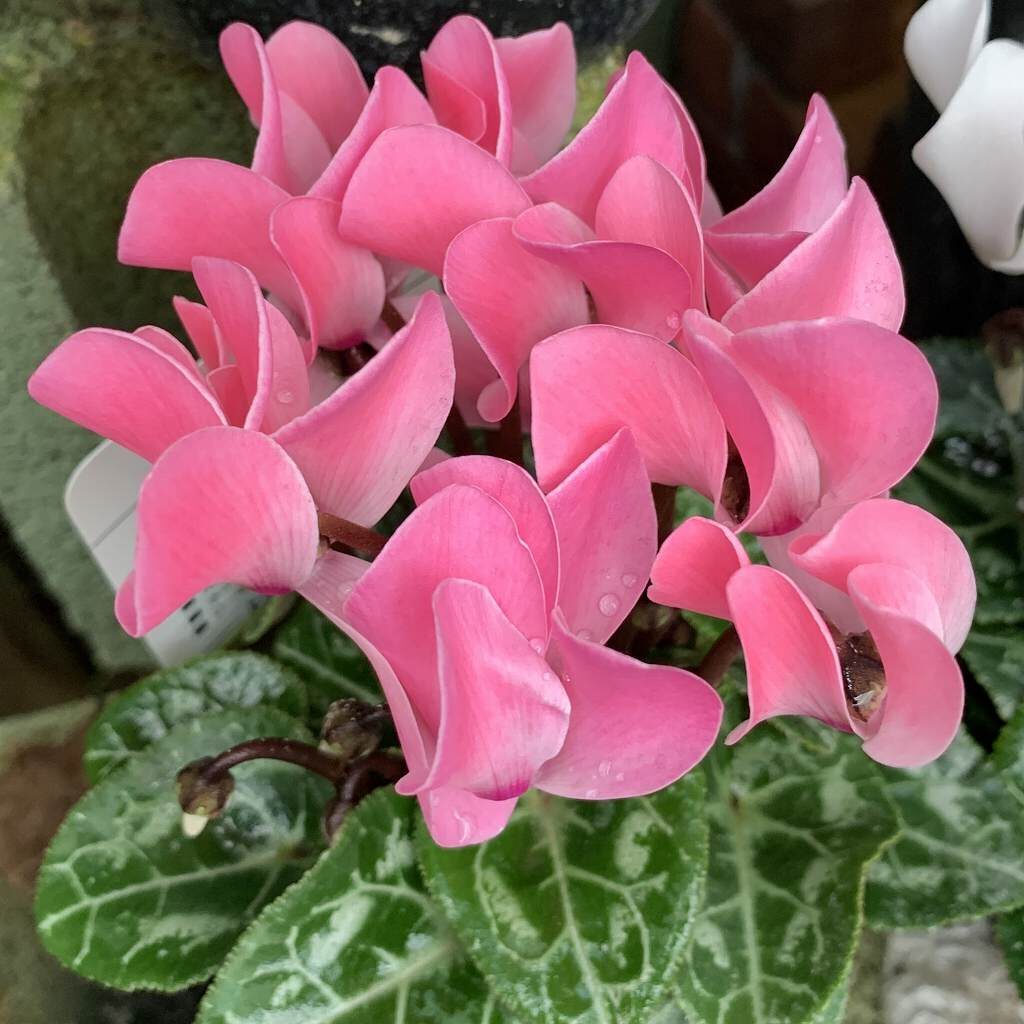シクラメンは花がうつむくように咲いて花言葉も「はにかみ」。花壇で育つものや、芳香を放つものもあり、かがり火のように冬を彩ります。
Cyclamen flower blooms downward, so the flower language is “shy”. They light up winter like a bonfire, some grow in flowerbeds, and some are fragrant.
【仮名】シクラメン, カガリビバナ
【和名】篝火花
【英名】Cyclamen, Sow Bread
【学名】Cyclamen
【誕生】01/ 14, 12/ 07
【開花】01, 02, 03, 04, 10, 11, 12月
【花色】White, Pink, Red, Purple, Violet, Blue, Green, Yellow, Orange






シクラメン
シクラメンの来歴
シクラメンはサクラソウ科の多年草です。原産地は地中海沿岸。欧州ではペルシカム種を中心に改良が進み、多くの品種が作られました。日本へは明治時代末期に渡来。花言葉は、花がうつむくように咲くことから「内気」「はにかみ」のほか、白花が「清純」、赤花が「嫉妬」です。
シクラメンの名前
シクラメンはラテン語の属名で、「円」という意味です。その由来は塊茎の形が丸いから、または受粉後に花柄が螺旋状に丸まるから。和名は、牧野富太郎博士が花の形状から「篝火花」、大久保三郎博士が英名の直訳から「豚の饅頭」と名づけましたが、ほとんど使われていません。
シクラメンの姿形
シクラメンは地上に出た塊茎の先端から葉柄と花柄が伸びます。葉はハート形で斑が入り、縁がギザギザ。花は柄の先が曲がって下向きに咲き、花冠が5裂で上向きに反り返ります。雄しべは短く、花冠のつけ根に合着。花後は蒴果を結び、株元に落ちた種子をアリが遠くへ運びます。
シクラメンの花壇
シクラメンの栽培が日本で本格化したのは第二次世界大戦後。黄色や複色、フリンジ咲きや八重咲きの花も登場し、冬を彩る室内の鉢植えとして広がりました。さらに1996年、埼玉県の生産者が寒さに強い矮性種を育成。花壇でも元気に育つ「ガーデンシクラメン」が広がっています。
シクラメンの香気
シクラメンの花はセスキテルペンという埃のような臭気成分と、シトロネロールという薔薇のような香気成分を含むものの微量のため、ほとんど匂いません。しかし1996年、埼玉県の研究者が生物工学により香気成分のみ強めることに成功。この「芳香シクラメン」も広がっています。
Cyclamen
History of the Cyclamen
Cyclamen is a perennial plant of the Primulaceae family. The place of origin is the Mediterranean coast. In Europe, improvement progressed mainly on the Persicum species, and many varieties were created. Came to Japan at the end of the Meiji era. The language of flowers is “shyness” because the flower blooms downward, white flowers are “pure” and red flowers are “jealousy”.
Name of Cyclamen
Cyclamen is the Latin genus name, meaning “circle”. It is derived from the rounded shape of the tuber, or from the spiral curling of the peduncle after pollination. Dr. Tomitaro Makino gave it the Japanese name “Bonfire” from the shape of the flower, and Dr. Saburo Okubo named it “Sow Bun” from the literal translation of the English name, but they are rarely used.
Shape of Cyclamen
Cyclamen grows petioles and flower stalks from the tip of the tuber that comes out above the ground. The leaves are heart-shaped and mottled with jagged edges. The tip of the flower stem bends and blooms downward, and the corolla is curved upward with five lobes. The stamens are short and fused to the base of the corolla. After flowering, it produces capsules, and drops seeds near the plant, which the ants carry far away.
Flower bed of Cyclamen
Cultivation of Cyclamen began in earnest in Japan after World War II. Yellow, multi-colored, fringed and double-flowered flowers have also appeared, and have spread as indoor potted plants that light up winter. Furthermore, in 1996, a producer in Saitama Prefecture bred a dwarf variety that was resistant to the cold. “Garden cyclamen” that grows well in flower beds is spreading.
Scent of Cyclamen
Cyclamen flowers contain sesquiterpene, a dust-like odorous component, and citronellol, a rose-like aromatic component,but they are almost odorless due to their very low content. However, in 1996, a researcher in Saitama Prefecture succeeded in using bioengineering to enhance only the aroma component. This “fragrant cyclamen” is also spreading.


